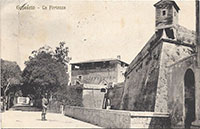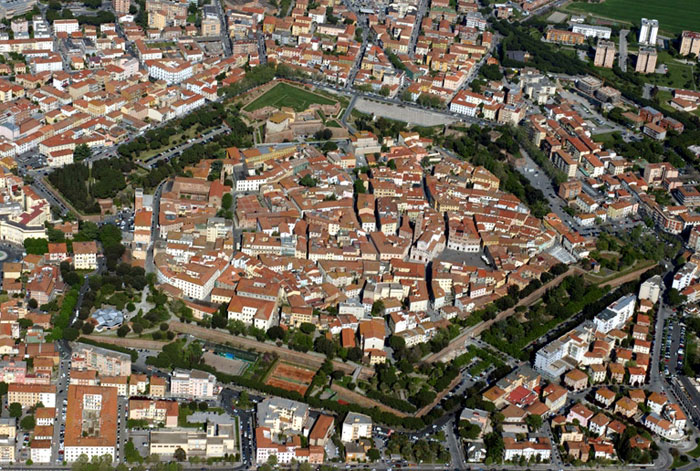The Maremma's provincial capital Grosseto sits on a plain traced by the Ombrone river. Grosseto was originally surrounded by a marine gulf that, over the centuries, was transformed into a large lagoon.Although it was damaged by bombing during the 2nd World War, the city has a lovely old town center enclosed by its marvelous Hexagonal Walls. They were built by the Medici at the end of the 16th century from a design by Baldassarre Lanci; the Fortezza Medicea, the northeast bulwark of the walls, is a site of particular fascination consisting of tunnels, magazines and gatehouses.
|
Mappa Grosseto, Piazza Dante | Ingrandire mappa
|
|
||||
 |
||||
Grosseto, Fortezza [1
|
||||
|
|
||||
 |
||||
Album Grosseto
|
||||
Galleria d'immagini Bastione Fortezza
|
||||
 |
 |
 |
||
Bastione Fortezza con il Cassero Senese
|
Bastione Fortezza | Ingresso al Cassero Senese sul bastione Fortezza | ||
 |
 |
 |
||
Il bastione di Santa Lucia e il Cassero Senese visti da sud
|
Piazza d'Armi e il pozzo della Fortezza | Bastione della Vittoria | ||
 |
 |
 |
||
| Il Cassero Senese di Grosseto visto dall'esterno delle Mura | Il Cassero Senese. L'entrata col ponte levatoio
|
Bastione Maiano lungo le Mura di Grosseto | ||
|
||||
